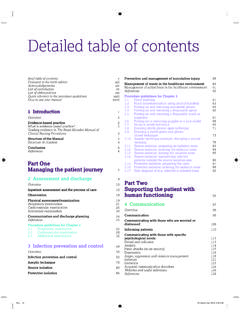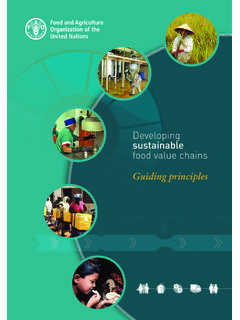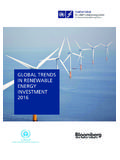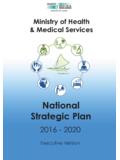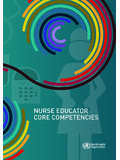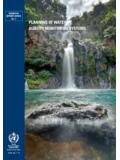Transcription of (Microbiological risk assessment series no. 10)
1 ISBN 92 4 156331 1(WHO) (NLM classification: QW )ISBN 92 5 105574 2 (FAO)ISSN 1726-5274 WHO Library Cataloguing-in-Publication DataJoint FAO/WHO Technical Meeting on Enterobacter sakazakii and Salmonella Powdered Infant Formula (2006: Rome, Italy)Enterobacter sakazakii and Salmonella in powdered infant formula : meeting report.(Microbiological risk assessment series no. 10) Publication of the report was coordinated by Sarah Cahill. Ruth Duffy edited the report - Enterobacter sakazakii pathogenicity. 2. Salmonella pathogenicity. 3. Infant formula. 4. Infant food microbiology. 5. Food contamination. 6. Risk assessment . I. Cahill, Sarah. II. Duffy, Ruth. III. World Health Organization.
2 IV. Food and Agriculture Organization of the United Nations. V. Title. VI. designations employed and the presentation of the material in this publication do not imply the expression of any opinion whatsoever on the part of the World Health Organization nor of the Food and Agriculture Organization of the United Nations concerning the legal or development status of any country, territory, city or area or of its authorities, or concerning the delimitation of its frontiers or boundaries. The views expressed herein are those of the authors and do not necessarily represent those of the World Health Organization nor of the Food and Agriculture Organization of the United Nations nor of their affiliated organization(s).
3 The World Health Organization and the Food and Agriculture Organization of the United Nations do not warrant that the information contained in this publication is complete and shall not be liable for any damage incurred as a result of its rights reserved. Requests for permission to reproduce or translate the material contained in this publication whether for sale or for non-commercial distribution should be addressed to the Chief, Electronic Publishing Policy and Support Branch, Information Division, Food and Agriculture Organization of the United Nations, Viale delle Terme di Caracalla, 00153 Rome, Italy (fax: +39 06 57052256; e-mail: or to WHO Press, World Health Organization, 20 Avenue Appia, 1211 Geneva 27, Switzerland (fax: +41 22 7914806.))
4 E-mail: FAO / WHO 2006 For further information on the joint FAO/WHO activities on microbiological risk assessment , please contact:Food Quality and Standards ServiceNutrition and Consumer Protection DivisionFood and Agriculture Organization of the United NationsViale delle Terme di Caracalla00153 Rome, ItalyFax: (+39) 06 57054593E-mail: site: Department of Food Safety, Zoonoses and Foodborne DiseaseWorld Health Organization20 Avenue AppiaCH-1211 Geneva 27 SwitzerlandFax: (+41) 22 7914807E-mail: site: design: Food and Agriculture Organization of the United Nations and the World Health Organization Cover picture: Dennis Kunkel Microscopy, of the World Health Organizationcan be obtained from:WHO PressWorld Health Organization, 20 Avenue AppiaCH-1211 Geneva 27, SwitzerlandTel: (+41) 22 7913264 Fax: (+41) 22 7914857E-mail: the Internet from of the Food and Agriculture Organization of the United Nations can be ordered from:Sales and Marketing Group, Information DivisionFood and Agriculture Organization of the United Nations Viale delle Terme di Caracalla, 00153 Rome, Italy Fax: (+39) 06 57053360E-mail: or on the Internet from in ItalyFAO/WHO Microbiological Risk assessment series No.
5 10 Enterobacter sakazakii and Salmonella in powdered infant formula: meeting report CORRIGENDA A minor error in the relative risk calculations for some of the preparation and handling scenarios where powdered infant formula (PIF) was reconstituted at 60oC has been identified. This means that the relative risk previously reported for certain scenarios where PIF was reconstituted at 60oC was an underestimation of the risk reduction at this reconstitution temperature. This change does not affect the qualitative conclusions of the expert meeting regarding the general nature of the impact of higher reconstitution temperatures in handling scenarios.
6 The specific relative risk reductions for certain preparation and handling scenarios where PIF was reconstituted at 60oC in Tables 10, 11, 12, 15, 16 and 19 should be updated as shown below. (- indicates no change from what is currently presented in the report). Table 15 Table 16 Preparation, storage and feeding scenarios 60oC 60oC Refrigeration, re-warming, hour feeding period -6 -15 Refrigeration, re-warming, 1 hour feeding period - -3 No refrigeration, re-warming, hour feeding period -8 -28 No refrigeration, re-warming, 1 hour feeding period - -6 Table 19 Scenarios 60oC Cool room temperature (20oC) 1: Mix in bottle, cool & hold for 1 hour, no re-warming, then feed within 20 minutes -10 2: Mix in a bottle then cooled within 5 minutes to 37oC, and feeding for 20 minutes (37oC) -14 3: 25 L container, no refrigeration, 1 hour holding, 30 minutes feeding > - 100,000 4.
7 25L container, 1 hour prep time, refrigeration 6 hours, re-warmed, 30 minutes feeding -44 5: 1L container, no refrigeration, 1 hour holding, 30 minutes feeding -14 6: 1l container, 1 hour prep. time, refrigeration 6 hours, re-warm, 30 minutes feeding Warm room temperature (30oC) 1: Mix in bottle, cool & hold for 1 hour, no re-warming, then feed within 20 minutes -32 2: Mix in a bottle then cooled within 5 minutes to 37oC, and feeding for 20 minutes (37oC) -41 3: 25 L container, no refrigeration, 1 hour holding, 30 minutes feeding > - 100,000 4: 25L container, 1 hour prep time, refrigeration 6 hours, re-warmed, 30 minutes feeding -2,044 5: 1L container, no refrigeration, 1 hour holding, 30 minutes feeding -31 1 L container, 1 hour prep.
8 Time, refrigeration 6 hours, re-warm, 30 minutes feeding TC/M/A0707E ISBN 92-5-105574-2 ISSN 1726-5274 Table 10 Table 11 Table 12 Preparation, storage and feeding scenarios 60oC 60 oC 60 oC Refrigeration, re-warming, short feeding period - - Refrigeration, no re-warming, extended feeding period - - Refrigeration, no re-warming, short feeding period - - No refrigeration, re-warming, extended feeding period - - No refrigeration, re-warming, short feeding period - - 33 No refrigeration, no re-warming, Extended feeding period - - No refrigeration, no re-warming, short feeding period - - -iii -CONTENTSA cknowledgementsviiContributorsixForeword xiAbbreviationsxiiiEXECUTIVE SUMMARYxvRECOMMENDATIONSxix1.
9 Microorganisms other than Enterobacter sakazakii andSalmonella52. EPIDEMIOLOGICAL AND MICROBIOLOGICAL ASPECTS OFENTEROBACTER Epidemiology and public Outbreaks: Update since Update on microbiological Characterization of the Isolation and Persistence in a desiccated Pathogenicity and Dose Conclusions143. QUANTITATIVE RISK assessment MODEL FORENTEROBACTER SAKAZAKIIIN POWDERED INFANT Overview of the risk assessment model15- iv Hazard Exposure Risk Review of the Conclusions224. EVALUATION OF RISK MANAGEMENT INTERVENTIONS FORENTEROBACTER SAKAZAKIIIN POWDERED INFANT Impact of control measures in the manufacturing Current industry Processing Dry-mix Preparation, storage and handling Consumer practices (in hospital and at home) Selected Relative risk.
10 Results of Microbiological criteria for powdered infant Two-class attribute sampling plans for Enterobacter sakazakii inpowdered infant Sampling plans for Consideration of the cumulative impact of sampling plans through changes inproduction management and lot Illustrative example of the cumulative impact of sampling plansthrough changes in production management and lot POWDERED INFANT Epidemiology and public Epidemiology of Salmonella Recent outbreaks of salmonellosis associated with powdered infant Dose response62-v Update on microbiological Risk-reduction Current industry Consideration of current microbiological Preparation and use of powdered infant formula by Need for risk assessment ?










